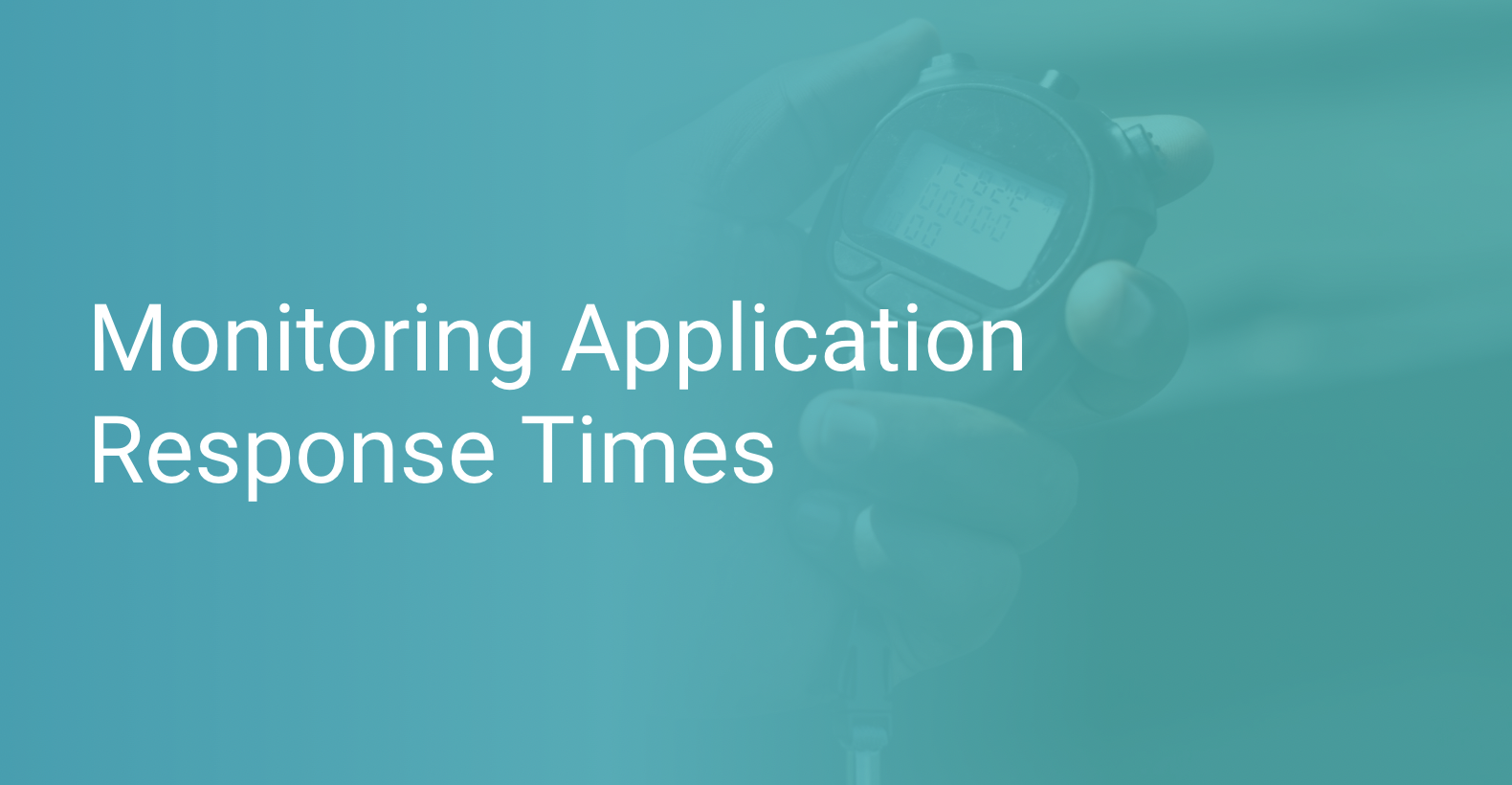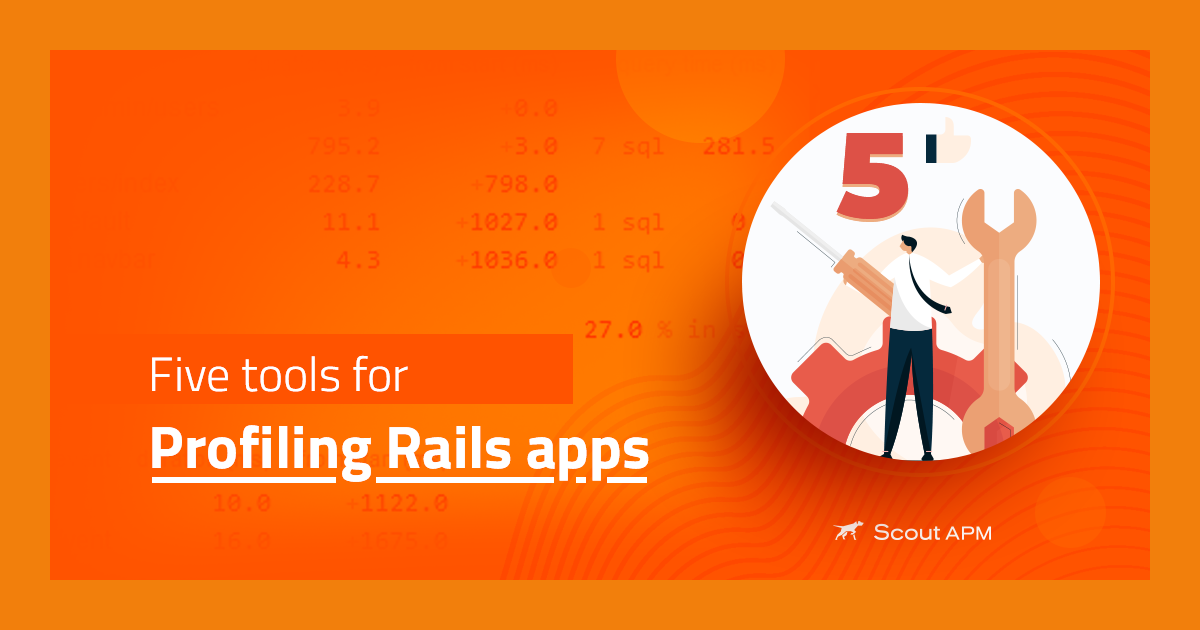Monitoring Application Response Times

The world is going digital with lightning speed. According to this report by Statista, at the beginning of January 2021, there were 4.66 billion active internet users in the world, which accounts for 59.5 percent of the world's population, and out of this 4.66 billion, around 4.32 billion (92.6%) users have accessed the internet by mobile. All companies regardless of the sector in which they operate, want to use the internet for expanding their business. Users love websites which load fast, browse fast and show results fast, making website response times a critical part of the customer experience.
According to Google, the application or page with less response time ranks higher in their search engine. Other factors work simultaneously for ranking, but response time is important. Every application or website has a server to respond to the request coming from the end-user. The time it takes the server to respond to those requests is server response time.
If your server is slow, there is a considerable chance that users will leave your application. Because slow servers send responses very late and time is very important for your end-users, they will look out for your alternative. No matter how well you’ve maintained other parts of your infrastructure, if the server is slow, it is a sizable drawback for your system. This article discusses more about response time: why it is so important, how to monitor it, tools for monitoring response time, etc.? So let us start one by one with each topic.
What is Application Response Time Monitoring?
Application response time is the time the application or server takes to respond to the requestor query done at the front end by the end-user. The response time of the server depends on several factors: number of requests, number of users, caching, internet speed, DNS, etc. For the application, the response is specifically the time taken by the servers to fetch data from the database and show it to the users. It may also include getting the response of some fetch API. For a website, the response time is dependent on the time taken by the servers to load different components of DOM and load all the CSS. If it takes more than the expected amount of time, it is considered slow response time by the server.
Response monitoring helps businesses to identify whether the server is healthy or not. It helps pinpoint when the server is slow in sending responses so a developer can resolve the issue before it hits many end-users. You can do application response monitoring using the many tools we will discuss in the latter part of this article. But before that, let’s see why application response monitoring is so important.
Why is Measuring Application Response Times So Important?
Application Response time shows the time taken by the server to respond to the user’s request. Hence, the company must monitor the application response time of the application. It improves the user experience and enhances customer retention. Other than that, application response time shows various metrics like MTTR, API status, error rate, etc.
Response Time Metrics
Response time can be measured using different metrics, and these metrics are to see whether the application is healthy or not. This section will discuss the essential metrics for application response time.
1. Request per second
As the name suggests, it is the number of requests an application gets from a user per second. It includes the number of requests the server has to respond to every second. Suppose a server receives more requests per second than is expected; the server will be slower. You can think of it as working on multiple tasks simultaneously versus working on a single task at a time. The latter one will see a task completed faster.
This metric helps measure the maximum thresholds of the server and the maximum number of requests it can handle per second. The more requests per second also show that your application receives visitors frequently, which is why it demands more scaling. Instead of thinking about how to reduce the number of requests per second to improve your response time, you should focus on reducing the load on a single server. We will be discussing the methods for doing so in the latter part of the article.
2. Data in and out
Whenever you send or receive something on the internet, it does not come directly. It is a parcel in the size of the packet. Packet size is very important for determining the speed at which we get the data.
This metric represents the data size reaching the server and the size of data sent out from the server. It tracks the size of each batch of data incoming to the server and going out. This metric helps analyze what is the maximum size of data that the server can handle. Generally, it is measured as a ratio or percentage by the team for analysis purposes. The bigger packet sizes can slow down the rate at which the server is receiving the data, making the response times increase. These metrics can become better by increasing hardware capabilities on the server-side, such as increasing RAM size, CPU, etc.
3. Average response time
Average response time or ART is the average of all of the response times of the requests generated by the end-user. The response can be different for each hour and each request, but the average response time takes an average of all of them. But the average response can derive some inaccurate reports in some cases. For example, some days, response times can be higher due to high traffic during sales or holidays. It will make the average response time of the whole week high, even if it is low at many points throughout the week. Instead of just seeing the average response time, a team must see the response time of each day separately. If we analyze the data of each day or even each hour, then we can easily study the behavior of our customers and servers and hence can produce better results.
4. Peak Response Time
Peak response time is the response time during peak time. Peak time means when the users are very active on the applications. It generally happens during some challenges, events, or sales in the application. This is the highest response time seen in the application, and it helps the team find a way to tackle these peak times. These responses can be bad for user experience, and the company can experience loss.
5. CPU Utilization
CPU utilization is the percentage of CPU utilized by the server. It shows whether or not the application requires more CPU. If your CPU utilization is at a peak then you need to install more CPUs.
How to Start Measuring Response Times
If you have not yet started measuring response time, you are missing crucial data. But now, you have to figure out how to measure the application response time. You can measure application response time in many ways, but these are some best practices that you should follow. Here are some easy steps for getting started with measuring application response time.
1. Determine your parameters
In this step, you determine the parameters you will track for monitoring application response time. You need to track each of the parameters separately and cumulate the results of all the metrics to determine the overall numbers. Suppose you are monitoring the application response time of a website. You need to monitor the peak response time, server response time, CPU utilization, etc. If these metrics are measured correctly, monitoring response time will be easier.
2. Performing tests
Once you have finalized the parameters required to test, you must test them manually. After development, once the application is in the beta phase, you can test the application response time against your selected metrics. You can see the behavior of your application against metrics that predict the health of the application. You can also write unit tests for your application to save time on running basic tests every time you deploy the application.
3. Record Results
After you have determined the parameters and tested in your local environments, and did basic testing, it’s time to test in the actual environment. When you have started testing in the actual environment, you should record the data you got per the organization's necessities. You can use any tool for recording your data. You generally use the recorded data for comparison with the updated results.
4. Result Analysis
Recording of results is helpful in many ways. One such use is the analysis of the results. We analyze results to see the trends of the metrics with time. For example, you are working on improving the response time of your application, and you are trying many things to improve it. Since you have many approaches, you must see which code has given you better results by looking at past trends.
How to improve application response time?
We have seen how application response time is beneficial for us and how to track application response time. Application response time is very crucial for the application, and it is a sign of a healthy application. Organizations always try to decrease the application response time. Hence they use many methods to do so.
Improving server response
Server response time corresponds to the time taken by the server to respond to requests done by the frontend. Server response time can be improved by increasing the bandwidth of the server and setting up multiple servers for different locations. It will increase the response time manifolds because each server will have less load now and hence can decrease the server response time.
Improving database performance
The database provides data to show in the front end. The faster it fetches the data for the front end, the lower the response time is. For decreasing the database response time, we can increase the memory size, cache memory, etc. Improving queries and cleaning the code can also reduce the server response time.
Hardware Update
Hardware has a prominent role in application response time. Hardware components like CPU, RAM, and processors play important roles in decreasing the application response time. Multiple CPUs can process multiple requests at once and hence response time can decrease.
Best response time monitoring tools
Monitoring application time cannot be done manually as it includes a lot of different metrics. That is why we use various automation tools to monitor application response time. There are many tools available in the market; hence we have to be careful when choosing the right tools for us. In the latter portion of this article, we will be covering some of the favorite picks in application response time monitoring tools. Let us see our best picks:
Scout APM
Scout APM is typically the first choice for organizations. Scout APM provides many features like N+1 query detection, memory bloat detection, error monitoring, and GitHub integrations. It shows you all the important metrics for measuring application response time in a responsive user interface. You can use the click and drag feature to see the metrics for different intervals in magnified view. You can use Scout APM for free for 14 days without showing any credit card.
Dynatrace
Dynatrace is another famous application monitoring tool. Dyntarce provides many features like microservices architecture, DevOps, and cloud automation. Dynatrace has a brilliant UI for showing metrics of application response time, and it suggests how you can improve the response time for your application.
Datadog
Datadog is one of the premium tools for overall application monitoring. It has a very aesthetic UI for showing all the features that are required for measuring the response time of the application. It provides many services like saas providers, log handlers, real-time user monitoring, etc. You can get complete visibility into the application response time. You will get all the metrics like hardware utilization, database status, and server status. Datadog provides many services such as infrastructure monitoring, log management, APM and continuous profiler, synthetic monitoring, etc.
New Relic
New Relic is one of the oldest application response time monitoring tools market. It has various features for response time monitoring such as the full trace of API calls, error logging if API fails, showing the response of all APIs together for comparison, and more.
Like many other monitoring tools, it sends automatic notifications for build or API fails. One of the demerits of New Relic that is felt by many developers is the bad UI. New Relic has tried to show all the features in one single page which makes the page very congested and difficult to navigate from there.
AppDynamics
AppDynamics is another modern performance management tool for the agile development of applications. It helps in the deep analysis of response time using manual logging, full tracing of logs, etc. They have wonderful customer service with a team that responds very fast. Also, the documentation maintained with each version is very helpful for customers. One demerit of AppDynamics is its UI as it does not give many features like search on the home page.
Conclusion
Response time is better if your application responds faster to customer queries. We have seen how response time can impact the business, so organizations should worry about improving their application response time. It increases customer retention and customer satisfaction. High response time makes users look for some other alternative of the application, causing a loss for the company.
To monitor application response time, we looked at various tools that show all the required metrics. Scout APM is one of the best modern tools for response time monitoring. If you want a cost-effective and modern tool for monitoring your application, then you should go for Scout APM; you will never regret it. You can try it for 14 days without showing any credit card and making any payment. Just sign up here and get started.





